1. Where to Stay
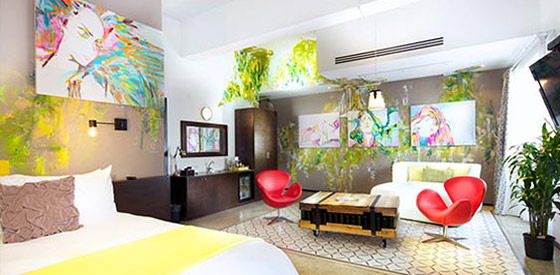
Check into one of the newest members of the Ace Hotel family, the 50-room American Trade Hotel (from $249), which opened last December in the city’s rapidly gentrifying walled Colonial District, Casco Viejo. Constructed in 1917, this neoclassical building once housed a department store with luxe apartments, but much like the rest of the area, it was eventually abandoned and covered in graffiti, even becoming the headquarters of a notorious street gang by 2000. You’d never be able to tell now: Thanks to meticulous restoration by local agencies Conservatorio, Hache Uve, and the astute curatorial eye of Atelier Ace, the hotel’s minimalist and uncluttered design smartly blends Old and New World styles, from Mexican modernism to Austrian secessionism, while the masculine but airy guest rooms feature hardwood almendro flooring, leather accent pieces, and Aesop bath products. There’s plenty to explore outside your door and still within the hotel space, too: Chef Clara Icaza’s farm-to-table Dining Room, the intimate Danilo’s Jazz Club, a rooftop pool, and an onsite café roasting custom house blends.
Go green at the Tántalo Hotel (from $143, including breakfast), which opened in the shell of a derelict 1970s apartment building in Casco Viejo in 2012. Ecofriendliness crops up in ways both understated (insulation made from old newspapers and phone books, tables upcycled from used cable spools) and monumental: There’s a two-story living wall, made up of nearly 1,000 plants nourished by reclaimed rainwater, in the hotel atrium. Each of the 12 guest rooms was designed by a different local artist on themes ranging from Charles Bukowski to Panamanian pop culture; try the Dosel room, where Juan Antonio Tarte created a cubist re-imagining of the Barro Colorado Island rainforest with geometric paintings of the birds found there. Start your morning with a complimentary rooftop yoga class, and close out the day at the bar with a cocktail muddled with local tropical fruit, like citrusy lulo or tangy tree tomato.
Ensconce yourself in the intimate Las Clementinas (from $250), opened in 2010 in a reclaimed 1930s apartment block. Every detail in the space comes with a story: floors made with guayacan wood salvaged from the bottom of Lake Gatun, antique desks from the city’s old British embassy, and hand-painted tiles made by Colombian artisans. The six spacious suites are subdued and vaguely Colonial in decor, with pops of color from bright modern paintings and verdant potted trees. Relax in the back gardens, lush with exotic fruits, chiles, and herbs, then sample those very ingredients in dishes like sea bass ceviche with passion fruit and micro cilantro ($8.50) at the onsite restaurant. The hotel’s history is still on fine display on the wall, papered with a custom-made print incorporating old photographs, postcards, newspaper clippings, and retro advertisements from the owner’s family collection.
2. Where to Eat
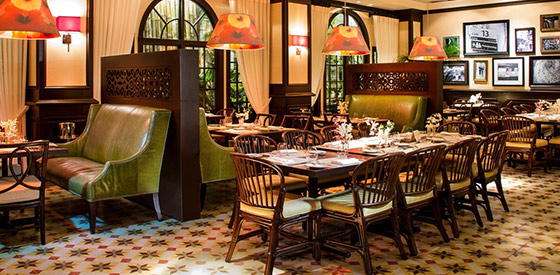
Dive into Panama’s melting pot flavors at Salsipuedes Cocina & Bar, which opened in 2012 at the Financial District’s elegant Bristol hotel. Helmed by Cuquita Arias de Calvo, known as “the Martha Stewart of Panama” for her popular cooking show Cocina de Autor, the restaurant pays homage to the indigenous and immigrant influences that have shaped the country. Calvo’s deep respect for her homeland’s cuisine is evident in playful dishes like sweet-and-sour crocodile tail with wonton flowers ($13.50), riffing on flavors introduced by Chinese railway workers in the 1850s, and Spanish Colonial-era favorites, like arroz con pollo ($14) and sancocho, a coriander-flavored regional chicken soup ($10). Look for unique ingredients across the menu, like the pixbae (a palm tree fruit) which comes alongside sea bass in tamarind sauce ($17.50) or the roselle (a Caribbean flower), which is made into a sorbet and served with portobello carpaccio ($10.50).
Take an internationally inspired culinary tour via the tasting menu at Manolo Caracol ($36). Chef Manuel Madueño, who grew up at another cultural crossroads (the Andalusian town of Barbate, on the Strait of Gibraltar), is a bit of a Renaissance man—he’s also a bookseller and art dealer—and it shows in both the décor (he chose the contemporary paintings on the wall) and the artfully imaginative small plates. The seasonally changing menu, incorporating ingredients from Madueño’s own farm, may include dishes like tuna tartare with tamarind sauce and a pixbae caramel candy; garlic-parsley razor clams with tempura cinnamon leaves and plantain sauce; or “farm-to-plate” chorizo with creamy Peruvian huancaína sauce.
Embrace the New Panamanian cuisine of Barcelona-trained chef Mario Castrellón at Humo. Opened in 2012, the space, filled with paintings of livestock (some bisected by butcher cut labels) sets the stage for the chef’s regional take on barbecue, like smoked queso fresco ($9), baby-back ribs glazed with local rum Ron Abuelo ($19), and brisket smoked with branches from the nance tree, a local fruit popular among Panama’s native tribes ($17). If you can’t get a table, try the chef’s first spot in the city, Maito: Hidden among a tangled thicket of bamboo and banana trees in Coco del Mar, the restaurant is the chef’s ode to local ingredients and the globally inspired fusion that defines Panamanian cooking today, featuring dishes like langoustine tule masi, a traditional stew of the indigenous Kuna tribe made with coconut and plantains ($17).
3. What to Do
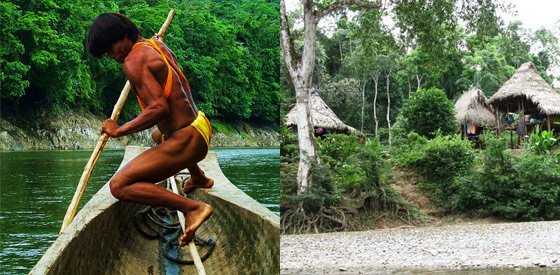
Sample some of the country’s freshest—and cheapest—seafood at the Mercado del Marisco, located on Avenida Balboa and Calle Eloy Alfaro between Casco Viejo and the bustling new Financial District. This no-frills warehouse, crammed with 69 loud (and pungent) stalls, was built with financial support from the Japanese in 1995 (hence the Japanese flag above the entrance), and it’s still a go-to for the city’s chefs, who pick up whole fish like Pacific sea bass ($8.50/kg). Head for one of the many ceviche stands to sample refreshing, citrus-cured sea bass ($1.50), prawn ($2.75), black conch ($3), or a combination of sea bass, prawn, and octopus ($2.50), all served out of a simple Styrofoam cup.
Immerse yourself in Panama’s indigenous culture and native flavors on a private day trip with Emberá Village Tours ($250 for one person, $120 per person for five or more). After being picked up at your hotel, knowledgeable guide Anne Gordon de Barrigón will take you to the edge of Chagres National Park, about an hour north of the city, where you’ll board a dugout canoe and travel upriver, past trees teeming with spider monkeys, toucans, and sloths. Upon arrival, you’ll receive a hearty musical greeting from the Emberá tribe, then hike through the jungle with tribal elders to find medicinal plants. Dig into a simple lunch of patacones (fried green plantains), fried chicken, and locally caught tilapia or peacock bass, then watch shamanic dances and shop for village-made crafts, woven from palm-leaf fibers or carved out of cocobolo wood and tagua seeds (often called vegetable ivory).
Order a cup of one of the world’s most complex, intensely flavorful, and rare coffee varieties at Bajareque Coffee House & Roastery (Calle 1), which opened in Casco Viejo in June 2012. The cafe is practically a coffee museum, where you can watch every step of the coffee-making process at the roaster in the glassed-in patio. The main attraction here—the rare geisha bean, beloved for its clean, sweet taste—goes from raw to roasted to brewed before your eyes, all in about 14 minutes. Seek out a chat with owner Wilford Lamastus, whose family grows the prized beans at high elevations on an estate outside Boquete near Panama’s western border. As for that cup: It’s $6.50, but, with a spectrum of taste notes ranging from citrus to Bergamot, well worth the cost.
4. Insider’s Tip
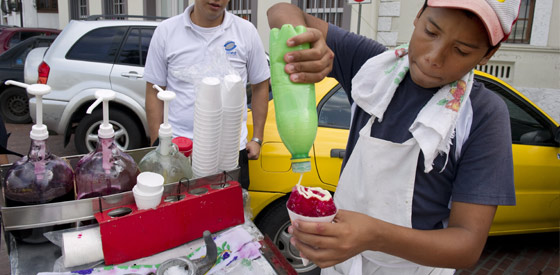
Panamanian cuisine may be globally inspired and experimental, but when it comes to dessert, opt for the simple, traditional raspado. On streets throughout the city, vendors hand-shave ice from immense blocks, pack it into paper cones, and top it with flavored syrups, like passion fruit, grape, strawberry, or orange. Don’t stop there: In-the-know locals will also ask for a liberal topping of leche condensada (condensed milk), miel de caña (molasses), or malteada (malted milk powder) for an even sweeter treat.
5. Oddball Day
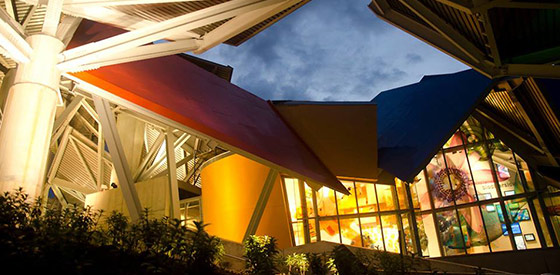
Escape the gleaming urban sprawl and explore Panama’s tropical flora and fauna without ever leaving the city limits. Begin your morning at the base of rainforested Ancón Hillwith an apple cayuco ($4.25)—a fresh baguette filled with apples, cream cheese, herbs, honey, and cinnamon—at Country Store & Cafe. On the patio, you can often spot tiny Geoffroy’s tamarins. From here, climb the hill to the city’s highest point via the paved path behind the Panama Canal Administration Building on Quarry Heights Road. In 30 minutes, you’ll reach the summit, where the Panamanian government planted a basketball-court-sized flag upon gaining sovereignty in 1979. Watch for sloths, toucans, and agoutis, which look like long-legged guinea pigs. Back at the bottom, hail a taxi ($7) to the newly built Biomuseo, Frank Gehry’s first building in Latin America, for a pre-opening private tour ($32). Celebrating the country’s rich biodiversity, the building is a riot of different colors, planes, and materials—a nod to the explosive volcanic birth of the isthmus millions of years ago. Five minutes up the road, order grilled octopus for lunch at Restaurante Pencas, then look for pelicans and diving frigate birds as you walk two-and-a-half miles along the palm-lined Amador Causeway. Stop off at Isla Naos, home to the Smithsonian Tropical Research Institute’s Punta Culebra Nature Center ($5), where you’ll find coral reef aquariums and pools with sea turtles and sharks. Two trails lead through tropical dry forest, a nearly extinct ecosystem where you’ll often see armadillos, raccoons, and iguanas. Continue along the causeway to Isla Flamenco for dinner at Bucanero’s Restaurante & Taberna, named for the pirates (such as the infamous Captain Morgan) who once plied these waters. Sample ultrafresh seafood caught by indigenous fisherman, like Caribbean lobster (market price) and Panamanian king crab ($69), then end the evening at Isla Flamenco’s cruise ship terminal, watching the sunset from the marina.
6. Links
Read English language news and current events on Newsroom Panama.
Learn about Panama’s underground art, music, and fashion on the blog Panamahipster (Spanish language, use Google Translate).
Find local restaurant recommendations on Degusta Panama (Spanish language).
Use the official Visit Panama website for trusted tour operators and exciting day trip options.